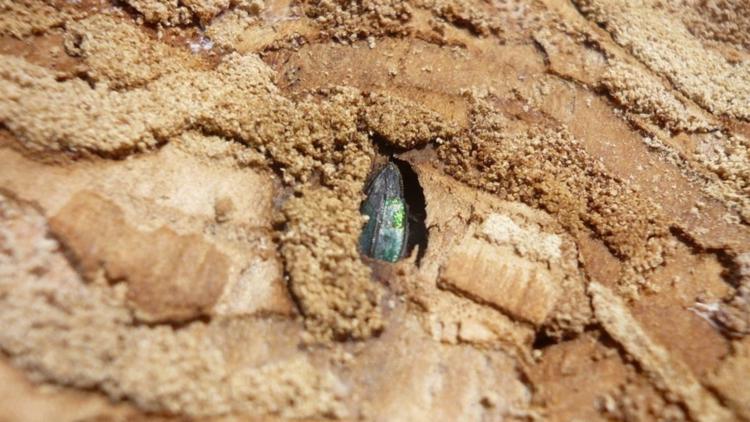ST. PAUL, Minn. - A destructive bug that has infested trees in other parts of the Twin Cities metro has moved to Scott County.
The Minnesota Department of Agriculture (MDA) confirmed Tuesday that an emerald ash borer (EAB) infestation has been located in a tree on private property in the city of Prior Lake.
The infested tree was detected through a call to the MDA's Arrest the Pest information phone line. Arrest the Pest allows concerned residents to report suspicious invasive plants and insects, like the emerald ash borer. Based on the call, MDA staff was able to visit the site and determine that the suspected ash tree was indeed infested with EAB.
Due to the discovery, Scott County will be put under an emergency quarantine and eventually join Anoka, Chisago, Dakota, Fillmore, Hennepin, Houston, Olmsted, Ramsey, and Winona counties in a state and federal quarantine. The quarantine is in place to help prevent EAB from spreading outside a known infested area. It is designed to limit the movement of any items that may be infested with EAB, including ash trees and ash tree limbs, as well as all hardwood firewood.
MDA reminds property owners that there are several things they should look for when checking for emerald ash borer.
- Be sure you've identified an ash tree. This is an important first step since EAB only feeds on ash trees. Ashes have opposite branching – meaning branches come off the trunk directly across from each other. On older trees, the bark is in a tight, diamond-shaped pattern. Younger trees have a relatively smooth bark.
- Look for woodpecker damage. Woodpeckers like EAB larvae and woodpecker holes may indicate the presence of EAB
- Check for bark cracks. EAB larvae tunneling under the bark can cause the bark to split open, revealing the larval (S-shaped) tunnels underneath.
- Contact a professional. If you feel your ash tree may be infested with EAB, contact a tree care professional, your city forester, or the MDA at arrest.the.pest@state.mn.us or 888-545-6684.
The biggest risk of spreading EAB comes from people unknowingly moving firewood or other ash products harboring larvae. There are three easy steps Minnesotans can take to keep EAB from spreading:
- Don't transport firewood. Buy firewood locally from approved vendors, and burn it where you buy it;
- Be aware of the quarantine restrictions. If you live in a quarantined county, be aware of the restrictions on movement of products such as ash trees, wood chips, and firewood; and,
- Watch your ash trees for infestation. If you think your ash tree is infested, go to www.mda.state.mn.us and use the "Do I Have Emerald Ash Borer?"
Emerald ash borer larvae kill ash trees by tunneling under the bark and feeding on the part of the tree that moves nutrients up and down the trunk. The invasive insect was first discovered in Minnesota in 2009. The last county to be quarantined for EAB was Chisago County earlier in August 2015.
Minnesota is highly susceptible to the EAB as the state has approximately one billion ash trees, more than any state in the nation.
For more information on emerald ash borer, go to the Minnesota Department of Agriculture's website at www.mda.state.mn.us/eab.



